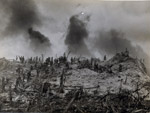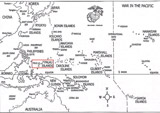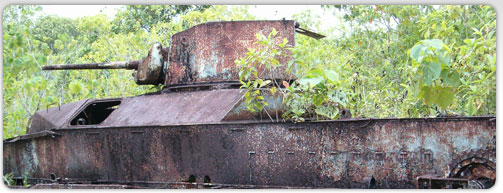Peleliu War History
In February 1985 the United States designated the Peleliu Battlefield a National Historic Landmark. It is less than 1,000 worldwide. The 1985 statement of significance states in part: |
 |
The battle for Peleliu, the Gateway to the Philippines, was the longest and one of the most hard-fought battles of the entire Central Pacific amphibious operations of World War II. In contrast to earlier combats where the Japanese had vainly attempted to annihilate the enemy on the beaches, Peleliu's defenses were organized with the main line of resistance established inland, artillery and mortar fire registered on the beaches, and defenses arranged in depth in order to sustain resistance to an attack while destroying the enemy. Although the crack Japanese troops lost the battle, their new tactics enabled them to inflict heavy losses on American Marine and Army forces and to hold out for 74 days. Those who would not surrender were sealed in the caves.

The battle began on September 15, 1944 and involved members of the 1st Marine Division and 81 U.S. Army Division against members of primarily the 14th Division, Japanese Imperial Army and attached units. Although the battle was declared over in November 1944, the final hostilities did not cease until April 22, 1947 when Lt. Ei Yamaguchi and 33 members of the 2d Infantry and 45th Guard Force sailors agreed to surrender to U.S. forces on Peleliu. This was the last formal surrender of World War II.
As a result of its Landmark designation, in 1991 the U.S. Park Service evaluated designating Peleliu Battlefield a National Historic Park, but this effort failed due to the lack of land available for Park designation. Little has been done since that time until December 2004 when the U.S. Congress passed PL 108-479 requesting the U.S. Department of Interior to take steps to protect the Landmark and provide information to the public on the battle.
In 2006 the National Park Service raised the status of the Peleliu Battlefield Landmark to threatened in its report to Congress.
